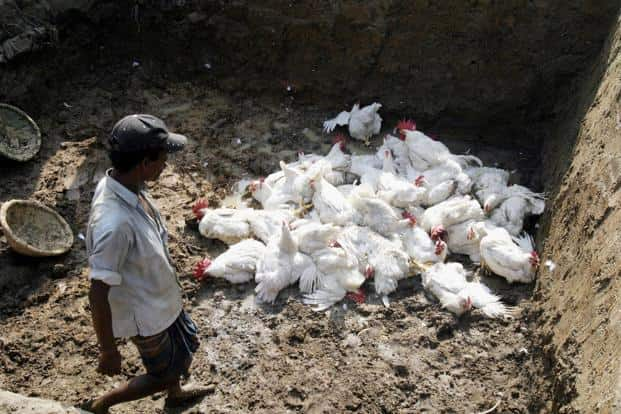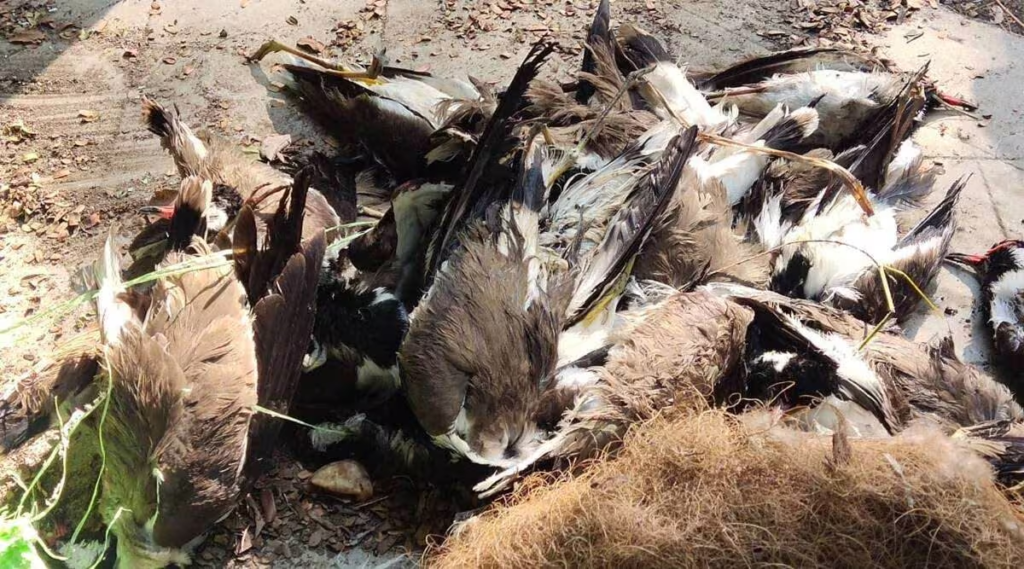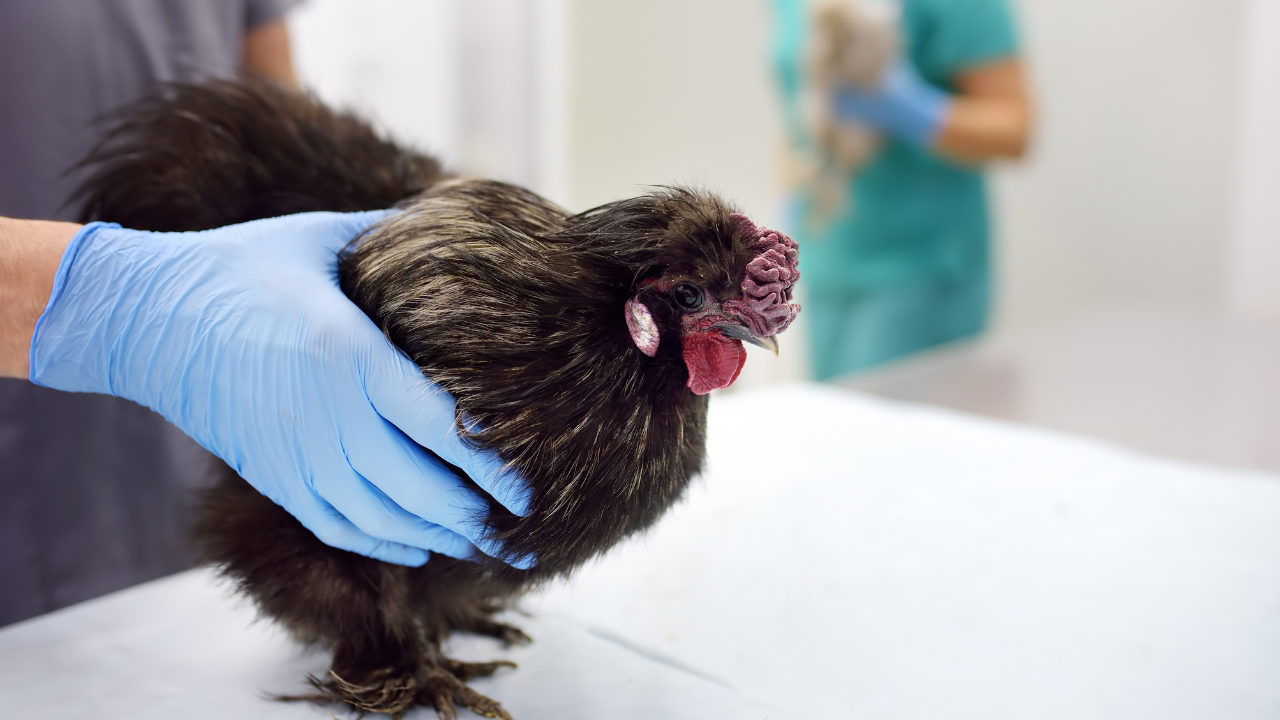Bird Flu Outbreak in Maharashtra that has led to the culling of over 7,000 poultry birds and the destruction of 2,000 eggs since January 2024. The outbreak, caused by the H5N1 avian influenza virus, has been reported in seven different areas, predominantly affecting unorganised and backyard poultry farms.
The situation has raised concerns not only for poultry farmers but also for wildlife, as the virus has impacted various bird species, including vultures and crows, as well as some wild animals such as tigers and leopards. With states like Andhra Pradesh and Telangana now on high alert, the need for precautionary measures and biosecurity has never been more critical.
Key Areas Affected by Bird Flu Outbreak in Maharashtra
The Animal Husbandry Department of Maharashtra has identified multiple epicenters of the bird flu outbreak. The affected districts include Latur, Nanded, Nagpur, Thane, Raigad, and Chandrapur. Chandrapur, in particular, has witnessed severe outbreaks, with over 2,065 birds culled in response to the virus’s presence near a previously affected area.
Most cases have been reported in backyard farms, where birds are raised in open conditions, making them more susceptible to infections spread by migratory birds.
In contrast, organised poultry farms, which implement strict biosecurity protocols, have managed to prevent outbreaks within their facilities. Authorities are continuing to monitor these areas to prevent further spread and are taking swift action to contain the virus.
Read : Bird Flu Detected in Georgia’s Commercial Poultry Flock in Elbert County
Apart from poultry farms, the outbreak has affected wildlife populations, with the deaths of multiple birds and animals, including those at the Gorewada Rescue Center in Nagpur. The spread of the virus to wild animals raises concerns about its potential mutation and cross-species transmission.
Maharashtra’s Response: Large-Scale Culling and Destruction
The Maharashtra government has implemented strict measures to control the spread of bird flu, including large-scale culling and destruction of contaminated poultry products. According to officials, all birds, eggs, and animal feed within a 5-km radius of affected areas are being systematically culled or destroyed to curb further transmission.
The virus’s impact on poultry farming has been significant, especially for small-scale and backyard farmers who lack the resources to implement advanced biosecurity measures.
Read : West Nile Virus Cases Detected in Spain and Italy: Raising Concerns for Tourists
Many farmers have suffered heavy losses, with entire flocks being wiped out as part of containment efforts. While compensation schemes are in place, they may not be sufficient to fully cover the economic impact on affected farmers.

The destruction of infected eggs is another critical measure, as bird flu can spread through contaminated poultry products. Authorities have advised people to ensure that any poultry products they consume are properly cooked, as high temperatures can kill the virus. However, the psychological impact of the outbreak has led to a decline in poultry consumption, affecting the broader poultry industry.
Veterinary teams and health experts are conducting regular inspections and testing to identify new cases early. Public health officials have also issued advisories to inform people about the risks of bird flu and encourage them to report any unusual bird deaths in their area.
Bird Flu Spreads to Nearby States: Andhra Pradesh and Telangana on High Alert
As Maharashtra battles the bird flu outbreak, neighbouring states Andhra Pradesh and Telangana are also on high alert following reports of sudden chicken deaths linked to H5N1 infection.
The virus has been detected in Godavari district of Andhra Pradesh, as well as Khammam and Sathupalli in Telangana. Samples from dead chickens in these areas have tested positive for avian influenza, confirming the virus’s presence.
Experts believe that migratory birds are the primary carriers of the virus, spreading it to poultry through contaminated water sources. As winter brings an influx of migratory birds to India, the risk of further outbreaks remains high.
Authorities in Andhra Pradesh and Telangana are closely monitoring the situation, conducting tests, and taking precautionary measures to prevent large-scale outbreaks similar to those seen in Maharashtra.
Health officials have advised poultry farmers in affected states to enhance biosecurity measures, including limiting contact between domestic birds and wild birds, ensuring proper sanitation, and reporting any unusual poultry deaths immediately. Consumers have also been advised to take precautions while handling raw poultry products and to ensure thorough cooking before consumption.

The bird flu outbreak has led to heightened surveillance and rapid response measures in multiple states. While human infections remain rare, the virus’s ability to spread among birds and wildlife continues to be a concern. Health experts stress the importance of early detection and containment efforts to prevent a more significant public health crisis.
What is Bird Flu?
Bird flu, or avian influenza, is a viral infection that primarily affects birds but can sometimes infect humans. The H5N1 strain is highly contagious among birds and can spread rapidly through direct contact with infected birds, their droppings, or contaminated surfaces. While human-to-human transmission is rare, there have been cases of severe illness and fatalities linked to avian influenza.
Recently, two people in the United States died from bird flu, raising concerns about the virus’s potential to cause severe illness in humans. Although such cases remain rare, they highlight the risks associated with avian influenza and the importance of strict containment measures.
Signs and Symptoms of Bird Flu
In humans, bird flu symptoms can vary from mild to severe and may include:
- Pink eye (conjunctivitis)
- High fever
- Fatigue
- Cough and cold
- Muscle aches
- Sore throat
- Nausea and vomiting
- Runny or stuffy nose
- Shortness of breath
Individuals who experience these symptoms, particularly those who have had exposure to poultry or birds, are advised to seek medical attention immediately. Early detection and treatment can help prevent complications and reduce the risk of severe illness.
Should You Be Worried?
While the current bird flu outbreak is a serious concern for poultry farmers and wildlife conservationists, health officials emphasize that the risk to humans remains low. Organised poultry farms continue to follow strict biosecurity measures, which have helped contain the virus within backyard poultry farms and wildlife populations.
However, the spread of bird flu among wild animals and poultry serves as a reminder of the potential risks associated with zoonotic diseases. Public health authorities are closely monitoring the situation and working to prevent further outbreaks.
Consumers are advised to take precautions, including ensuring that poultry products are thoroughly cooked before consumption. Proper hygiene practices, such as washing hands after handling raw poultry, can also help reduce the risk of infection.
Stay Informed and Take Precautions
As the bird flu outbreak continues to unfold, staying informed and taking necessary precautions is essential. Individuals involved in poultry farming or those who regularly interact with birds should follow recommended biosecurity guidelines to protect themselves and their livestock.
Authorities are urging the public to report any unusual bird deaths to local veterinary departments to help detect and control outbreaks at an early stage.
Although the bird flu outbreak in Maharashtra has led to significant losses in the poultry sector, swift action and preventive measures can help contain the spread of the virus and minimize its impact on public health.
By remaining vigilant and adhering to safety guidelines, both individuals and the poultry industry can work together to mitigate the risks associated with avian influenza.
let’s enjoy few years on earth with peace and happiness….✍🏼🙏

